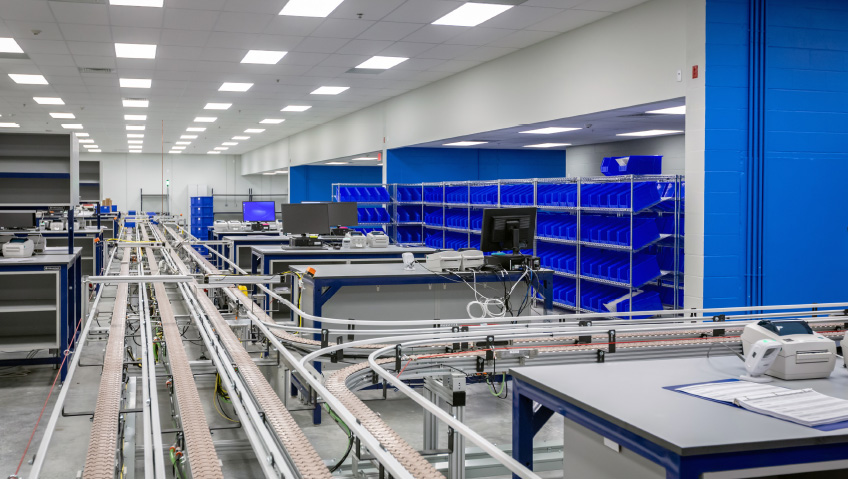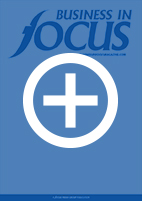Focused on enhancing safety, productivity, and efficiency by combining category-leading automation solutions, intuitive workflow software, and unsurpassed industry expertise, ARxIUM™ partners with health systems and pharmacies of all types with best-in-class technology and unmatched experience.
Addressing every sector of the pharmacy market, including health systems, hospital inpatient pharmacies, outpatient pharmacies, long-term care institutions, and government pharmacies, ARxIUM offers comprehensive and scalable pharmacy solutions by rethinking and redefining how pharmacies operate within healthcare ecosystems, ultimately contributing to better patient care and improved healthcare outcomes.
ARxIUM offers customers in all pharmacy environments a comprehensive selection of pharmacy technology available by combining resources, products, and expertise in an effort to increase patient safety, boost workflow effectiveness, and lower operating costs.
With the goal of making medication dispensing easier and safer, ARxIUM RxWorks™ Pro software helps pharmacies operate more efficiently and effectively by tracking medications across the enterprise. This means the software can handle inventory management and replenishment, packing, storage, and accounting / transactions, allowing hospitals and health systems to view, track, monitor, and act upon their inventory of medications within one hospital or across the entire health system.
“It’s a very difficult operational environment for pharmacy leaders who are trained to be clinicians, not supply chain experts, to keep track of all the medications—what they have, where they’re located, how much they have on hand in terms of quantity and dollar value for each drug,” explains Nhat H. Ngo, Owner and Chief Executive Officer of ARxIUM. “It’s a real challenge every day and is too much for anyone to manage well without the right technologies. Making matters worse are the severe staffing shortages hospitals and health systems are experiencing today.”
RxWorks provides users enterprise-wide visibility to see where medications are located, enabling pharmacists and their teams to create orders to replenish inventory at any given inventory-carrying location.
“It’s a sophisticated system that’s much-needed in the health system today,” says Ngo. “Sometimes it’s a life-and-death situation if you don’t have the right medication on hand when you need it.”
He recounts a story of a set of twins who urgently needed a drug that, due to a lack of enterprise visibility, couldn’t be found within the health system. This situation required the medical team to choose an alternative medication which led to a very serious adverse patient outcome. The hospital later learned that one of its sister hospitals, just a few miles down the road and part of the same IDN (integrated delivery network), had the medication.
“If they’d had enterprise-wide medication inventory visibility, this could have been prevented.”
In short, RxWorks improves patient safety by ensuring medication availability, having the right drugs when needed while also helping to manage and deliver on the five rights of medication management.
“The five ‘rights’ are the right patient getting the right drug at the right time, at the right dose through the right route,” says Ngo. “And this system enables the inventory management required to ensure the availability of the right drug, and particularly at the right time.”
Connected to RxWorks is a system of smart conveyance solutions to support a fast-growing trend in healthcare, the growth of Consolidated Service Centers to consolidate and centralize pharmacy operations to better support the enterprise. Think of hub and spoke—such a system is particularly effective for central fill and mail order prescription fulfillment operations. The idea is when you have a large health system with multiple hospitals and clinics, you need to be able to procure drugs on a consolidated basis. “Doing so optimizes the supply chain while ensuring that medications are distributed more efficiently,” Ngo says. “But more importantly, it’s the idea that you can optimize the entire medication distribution process from beginning to end.”
If a large health system has 10 hospital sites, for example, and each location procures a very expensive drug that comes in a box of 10 vials, and each vial is $1,000, it’s $10,000 per box. Each hospital buys their own box, but not all of the vials will get used by the expiration date.
“They use maybe half, and the rest goes unused and expires, and then they buy the next batch—so a lot of waste,” Ngo says. “But if you buy at a central location—a Consolidated Service Center (CSC)—and you distribute vials to the 10 hospitals, you can monitor the usages. Hospital A gets six, hospital B gets two, hospital C gets eight, depending on their usage, rather than each hospital buying individually and wasting the rest.”
Drug expiration is a big issue as health systems are very inefficient at managing expiration dates, resulting in many wasted drugs, he adds.
With RxWorks, users connect to a smart conveyance system that operates the entire central distribution process. Not only is there visibility to the drugs, but the clinics and hospitals can create requisitions for more drugs with the CSC filling those orders. The required hardware is the combination of a conveyance system and OptiFill™, a principal high-volume vial-filling solution that can handle over 20,000 daily prescriptions at each site. While OptiFill technology plays a significant role, the ARxIUM specialized software makes it work. Referred to as PPS, it acts as the “brain” of any OptiFill system configuration, managing workflow.
“It takes in different types of drugs and fills the drugs into vials and sends them to inventory carrying locations,” Ngo says. “You can do it for inpatient CSC for self-distribution, outpatient central fill, or mail to home operations.”
At the enterprise software visibility level, you’re able to see the orders and work to fulfill them with elegant workflows embedded in RxWorks, he adds. Then the pharmacy technician acts on the orders, with the pharmacy manager approving the order and a pharmacist verifying the fulfillment, as a safety check, all in RxWorks.
How do we get more pharmacies to move to this system? Is it cost or simply creating awareness of the benefits it could bring? “I think there’s certainly awareness,” Ngo says. Called a centralized pharmacy service center, consolidated pharmacy service center, or CPSC, the concept has been talked about since 2015, but only recently gained more traction.
“I’d say in the last few years, health systems [have been] thinking about setting up the CSCs,” Ngo says. Why? The drugs are very expensive, arguably the most expensive in a hospital operating budget, and costs have been rising by double digits over the last five years. “The idea of the CSC mainly has been driven by the need to deliver on important clinical initiatives, improve efficiencies, and reduce costs,” he says.
Certainly, there’s a lot of cost pressure on a health system. 2022 was a very tough year financially for many health systems—their performance was down 38 percent relative to 2021—and the forecast for 2023 is that approximately 70 percent of health systems are either going to break even or will be operating at a loss.
“That’s where the need for ARxIUM RxWorks, OptiFill, and smart conveyance systems come in,” says Ngo, “to design, set up, and run these CSCs. Combined, our connected solutions and expertise in pharmacy workflows help health system leaders achieve their vision for a CSC.”
On the patient safety and precision side, the RIVA™ system has become the standard when it comes to robotic sterile IV compounding. A fully automated IV compounding system created for hospital pharmacies, RIVA consistently and precisely produces IV syringes and bags, solving patient and pharmacy technician safety concerns, overall pharmacy efficiency, and ongoing regulatory environment obstacles by automating a significant part of the sterile compounding process.
“We’re very proud of our RIVA system,” says Ngo. “What sets the RIVA system apart and differentiates it in the marketplace is its accuracy and reliability. RIVA has accurately and safely prepared more than 14 million doses across all installations. It’s just very reliable.”
Finally, the MedSelect™ automated dispensing cabinets (ADC) from ARxIUM—together with a wide range of additional technologies intended to expand functionality—improve fulfillment accuracy and boost overall facility efficiency, lowering medication errors, controlling costs, complying with regulatory bodies, and boosting employee productivity. “It’s for pharmacy and nursing, to make sure medications are placed throughout the hospitals so nurses can take care of their patients by having access to the drugs when they’re needed,” Ngo says.
Think of ADCs as an ATM, says Ngo, where a nurse puts in their ID to access the medications. “You click on the patient whose drugs are due at noon, and cabinet drawers open and the bins open,” he says. “The nurse takes the medications and administers those medications to the patient.”
These ADCs can be placed on the surgery floor, in the ICU, and in the ER. “It’s another way to deliver on the five rights of medication management, having the right drugs available to the right patient,” says Ngo.
Holistically it all works together, from the supply chain to the RxWorks software and the smart conveyance CSC solutions that receive the drugs from the wholesaler. If you need a drug, you can see where this particular dose is located at your 10 hospitals or 300 clinics.
“I think what makes ARxIUM special is our single technology platform, and all hardware products, even competing solutions, can connect to this platform,” Ngo explains. “Having a connected system work that works well together is a beautiful thing, and RxWorks is the brain and backbone to make that happen.”
Along with the best-in-class RIVA, ARxIUM believes its combination of RxWorks and the smart conveyance system uniquely positions the company to partner with health systems as they implement consolidated service centers in the coming years. “We believe we have a game changer,” Ngo says. “Given the financial pressures facing health systems, pharmacies can utilize ARxIUM solutions to reduce cost while repositioning strategically as a revenue and profit center.”
Eight to 10 percent of a hospital’s annual drug budget is being wasted due to drug expiration or diverted. For a $100 million annual drug spend, for example, the cost of waste is substantial. With the ARxIUM systems, “you can ensure that significantly more of the drug budget is actually used for patient care. When I visit hospital pharmacies, they have waste bins for expired medications,” Ngo says. “There has to be a better way. It’s a huge opportunity to automate and optimize manual workflows, eliminate operational headaches, and make sure medications are available when patients need them.”
Ngo says he’s particularly proud not only of having the solution and technology, but the ARxIUM ability to support clinicians to provide quality patient care, while doing so at a reduced cost.
“We do that through our people, and our people have very deep knowledge and expertise and understanding of pharmacy workflows,” he says. “I’m super excited about the positive impact we’re making in healthcare. ARxIUM is delivering compelling next-generation solutions that are taking pharmacy operations to the next level.”













